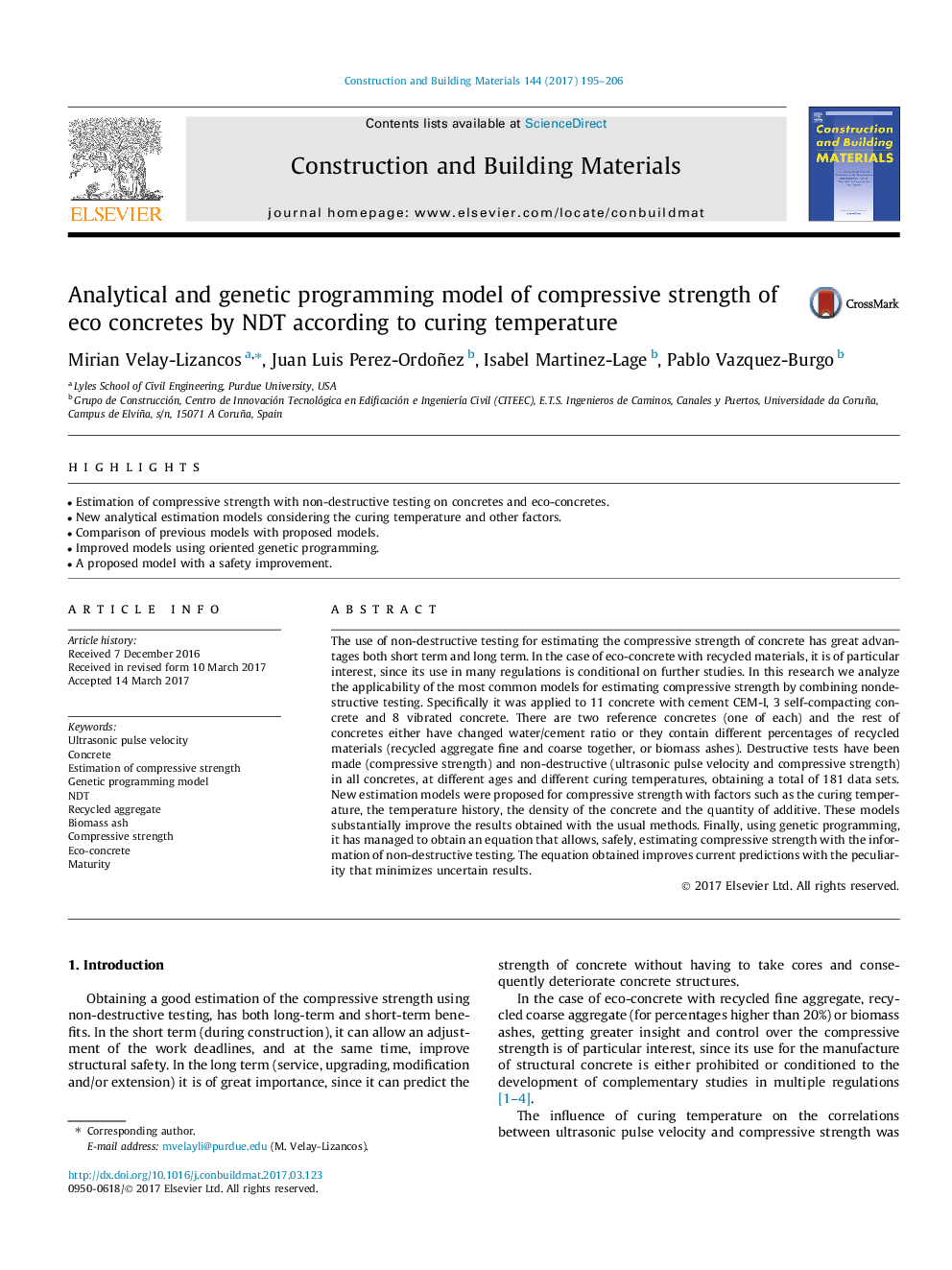| Article ID | Journal | Published Year | Pages | File Type |
|---|---|---|---|---|
| 4913159 | Construction and Building Materials | 2017 | 12 Pages |
Abstract
The use of non-destructive testing for estimating the compressive strength of concrete has great advantages both short term and long term. In the case of eco-concrete with recycled materials, it is of particular interest, since its use in many regulations is conditional on further studies. In this research we analyze the applicability of the most common models for estimating compressive strength by combining nondestructive testing. Specifically it was applied to 11 concrete with cement CEM-I, 3 self-compacting concrete and 8 vibrated concrete. There are two reference concretes (one of each) and the rest of concretes either have changed water/cement ratio or they contain different percentages of recycled materials (recycled aggregate fine and coarse together, or biomass ashes). Destructive tests have been made (compressive strength) and non-destructive (ultrasonic pulse velocity and compressive strength) in all concretes, at different ages and different curing temperatures, obtaining a total of 181 data sets. New estimation models were proposed for compressive strength with factors such as the curing temperature, the temperature history, the density of the concrete and the quantity of additive. These models substantially improve the results obtained with the usual methods. Finally, using genetic programming, it has managed to obtain an equation that allows, safely, estimating compressive strength with the information of non-destructive testing. The equation obtained improves current predictions with the peculiarity that minimizes uncertain results.
Keywords
Related Topics
Physical Sciences and Engineering
Engineering
Civil and Structural Engineering
Authors
Mirian Velay-Lizancos, Juan Luis Perez-Ordoñez, Isabel Martinez-Lage, Pablo Vazquez-Burgo,
